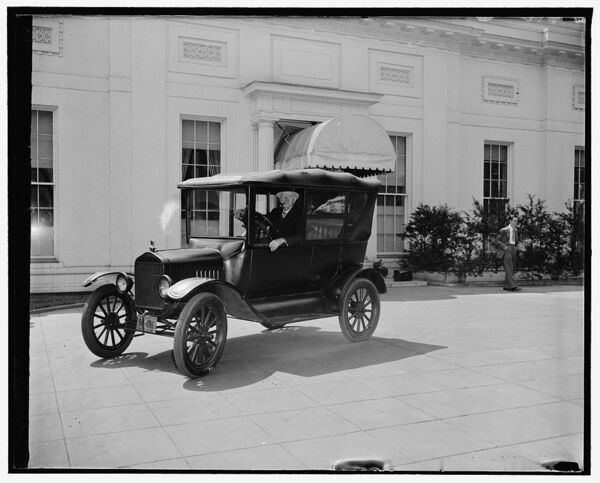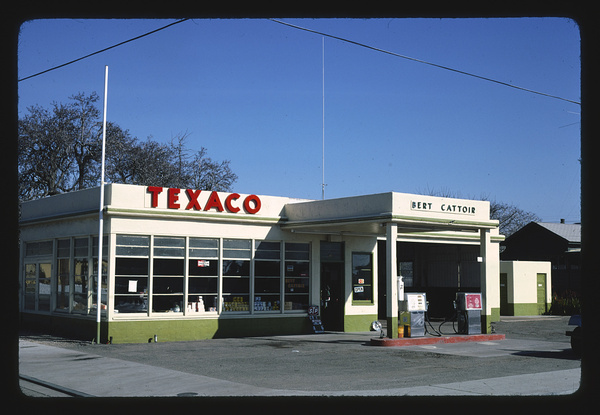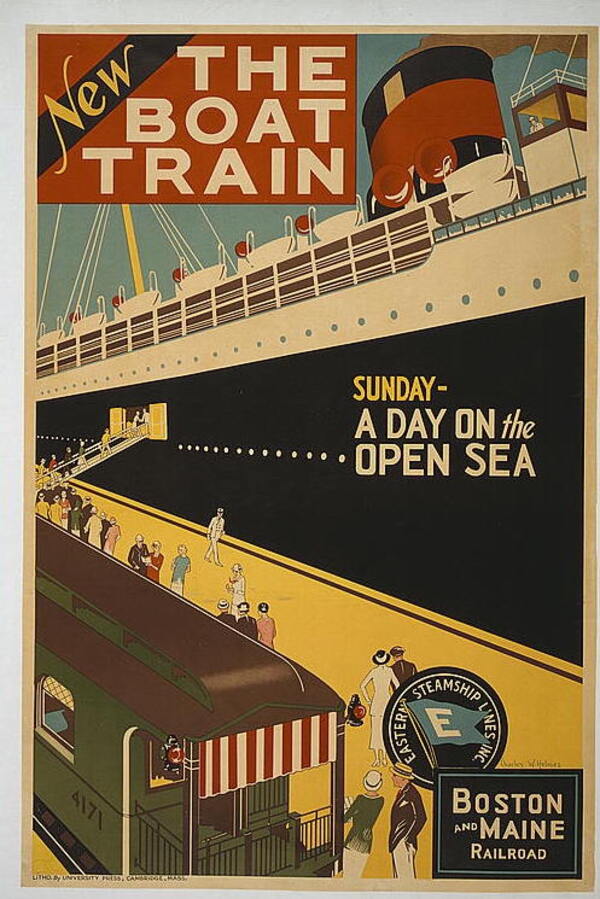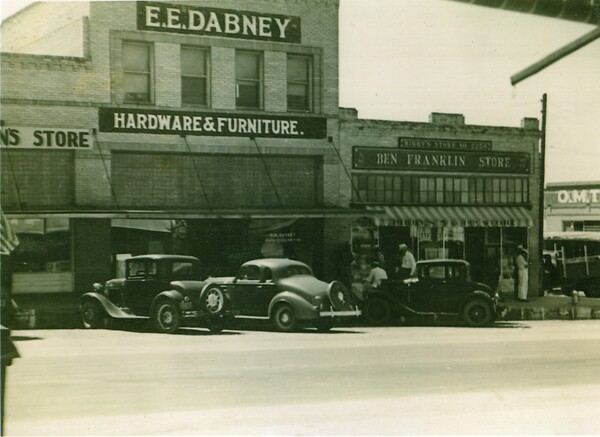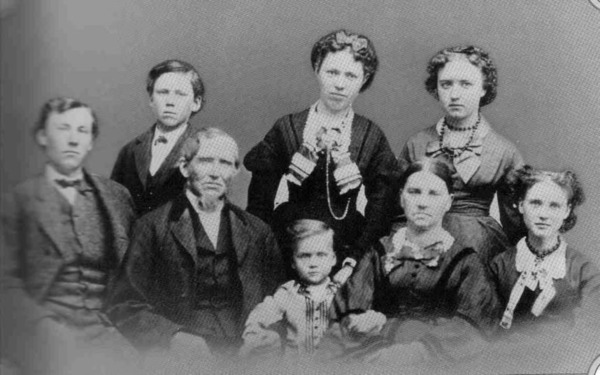If there’s one thing we learned from The Great Depression of the 1930s, it’s just how resilient we can be as a society. Times were hard, jobs were few, yet people remained positive and creative. Ingenious ideas like turning an old feed sack or flour bag into a new dress show why this was “The Greatest Generation.” Another shining example of our collective grit was the ability to keep food on the table for the family. We’ve already learned what a typical Depression-era breakfastmight look like; now, thanks to these stunning photographs from Yale University’s Photogrammar, we can see what dinner was like during (and shortly after) the Depression, all around the country.
Preparing Dinner
“Preparing dinner for the six hundred fifty flood refugees encamped at Tent City near Shawneetown, Illinois.” (1937)

“Preparing dinner in migrant camp, Berrien County, Michigan.” (1940)
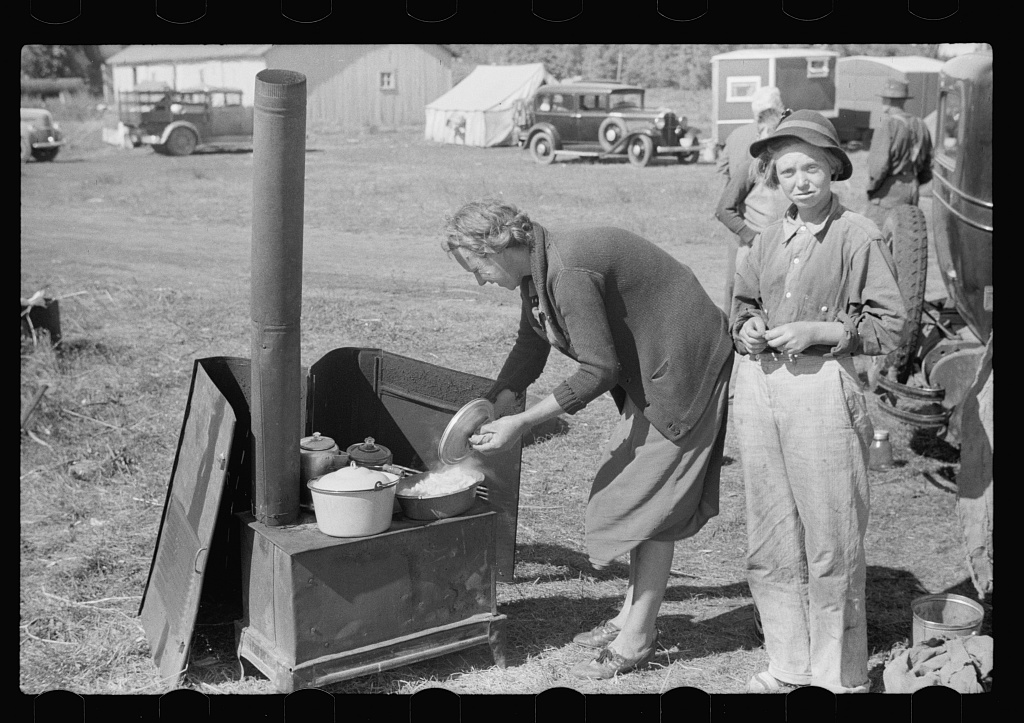
Click The NEXT PAGE Button To See More Photos!
Dinner’s Ready
“The chef at the Rimrock Camp in the central Oregon land development project gets ready to go into action on the dinner gong. Oregon.” (1936)
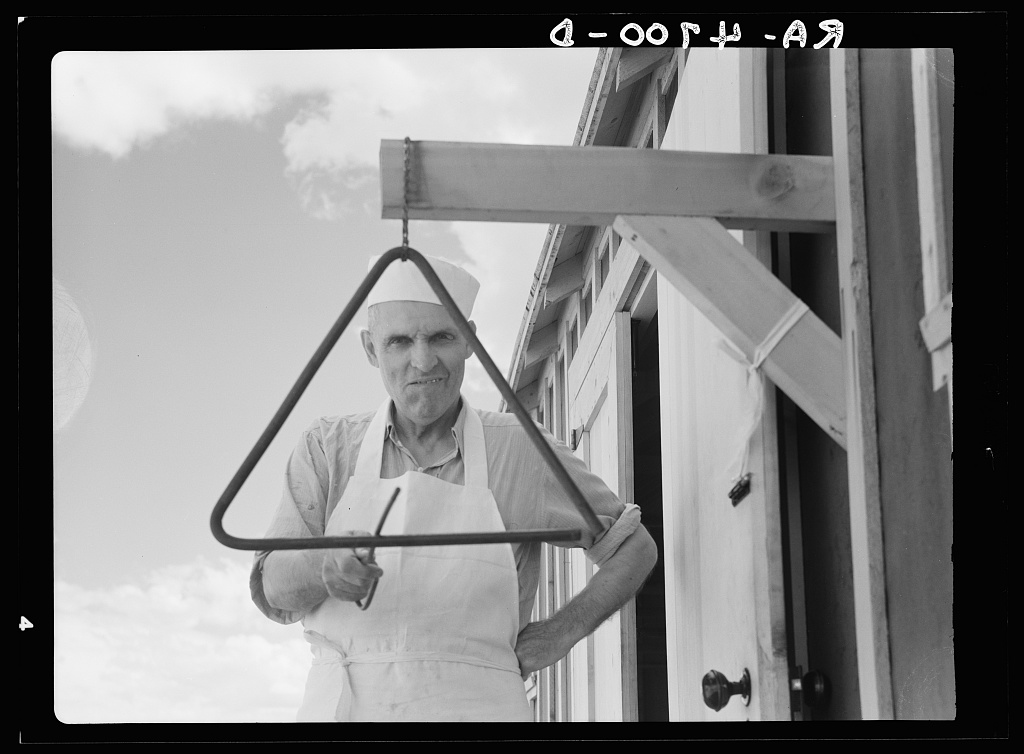
Photogrammar / Arthur Rothstein
“Camp cook blowing dinner horn, at camp near Effie, Minnesota.” (1937)
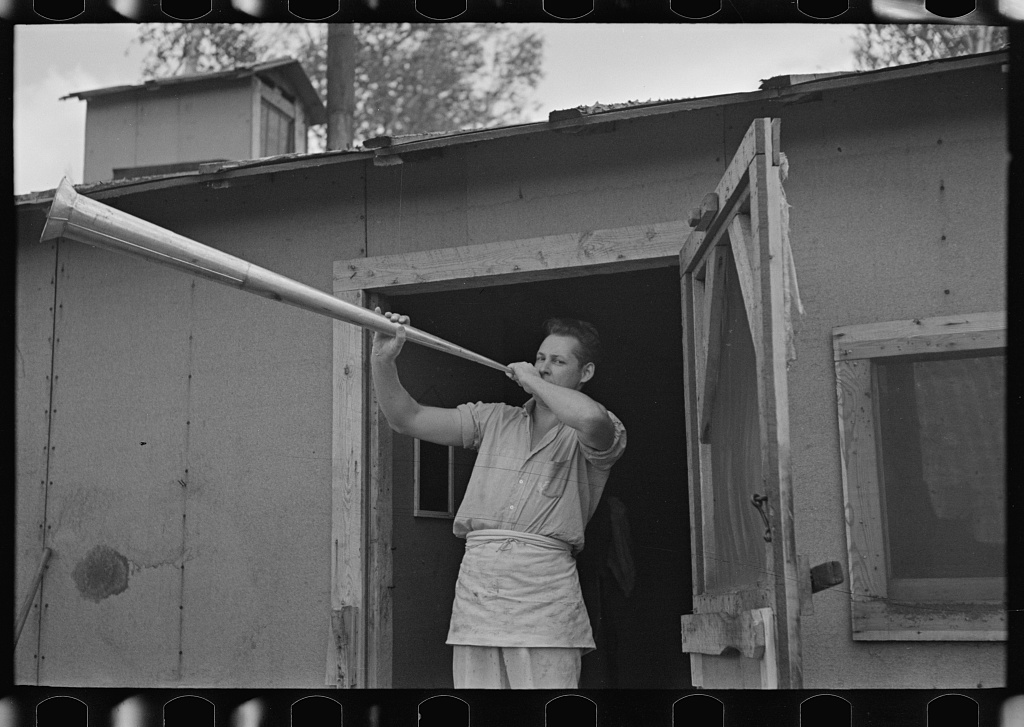
“Cowhand washing for dinner. Quarter Circle ‘U’ Ranch, Montana.” (1939)

Photogrammar / Arthur Rothstein
Click The NEXT PAGE Button To See More Photos!
Dinner Is Served
“Cowboy dishing up chili at noonday dinner. Cattle ranch near Marfa, Texas.” (1939)
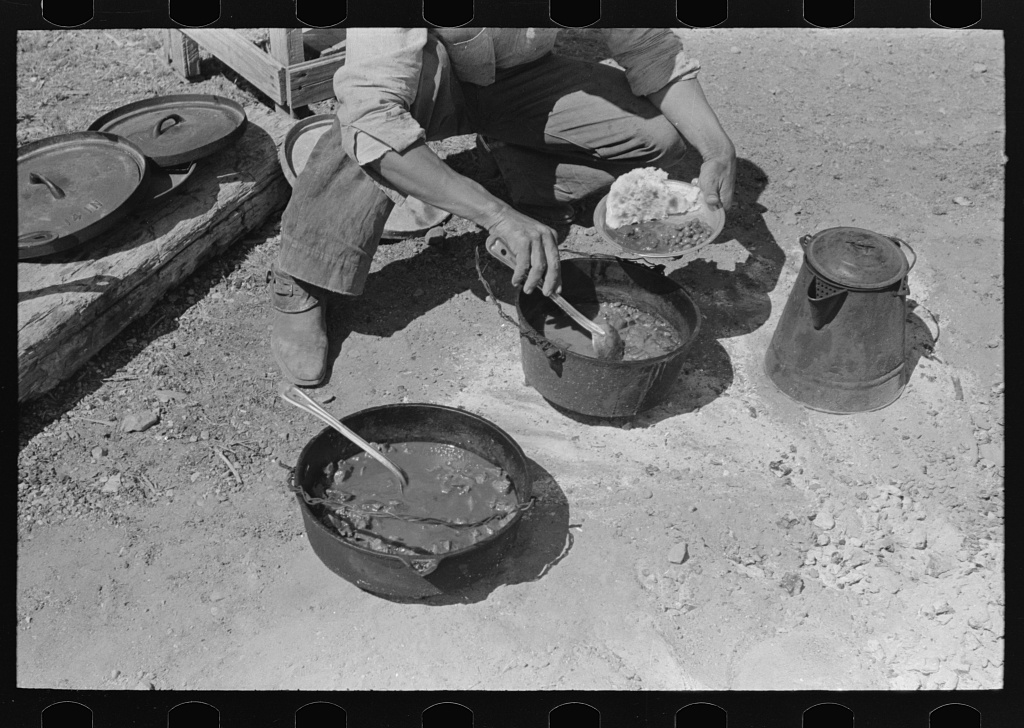
“Christmas dinner in home of Earl Pauley. Near Smithfield, Iowa. Dinner consisted of potatoes, cabbage and pie.” (1936)
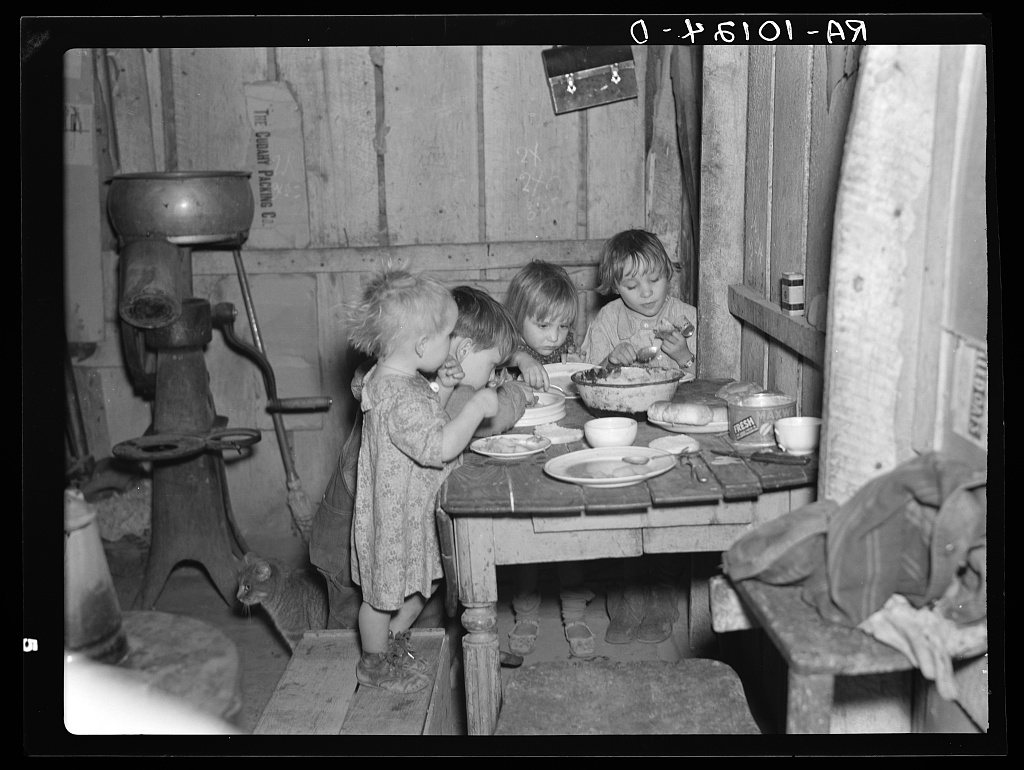
“The Faro Caudill [family] eating dinner in their dugout, Pie Town, New Mexico.” (1940)
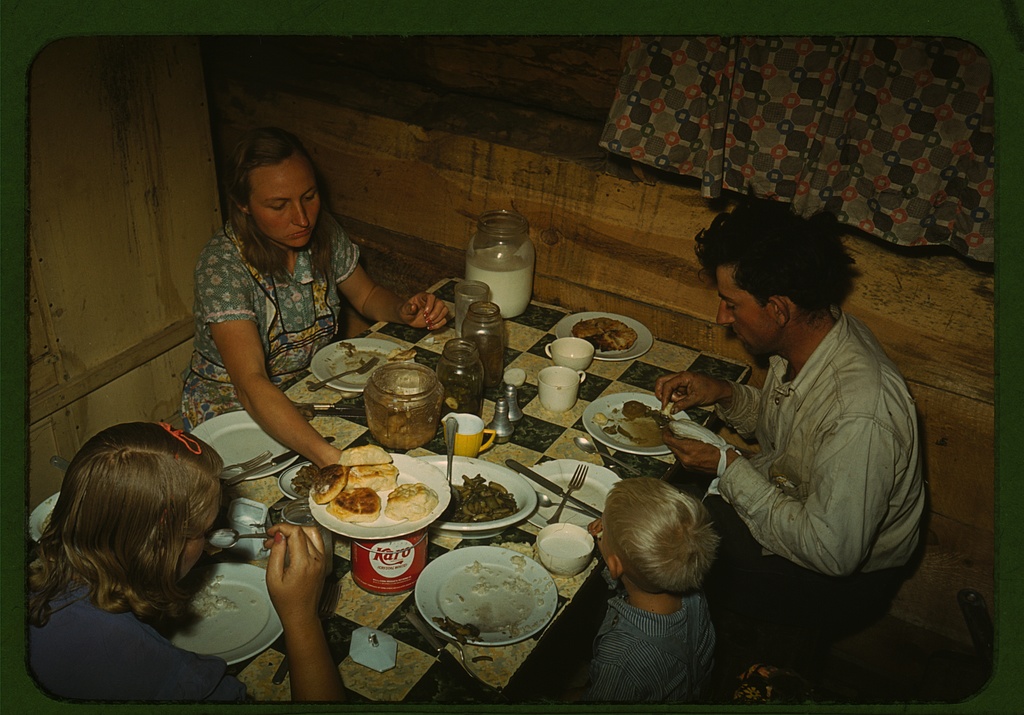
“Lumberjacks eating dinner at camp near Effie, Minnesota.” (1937)
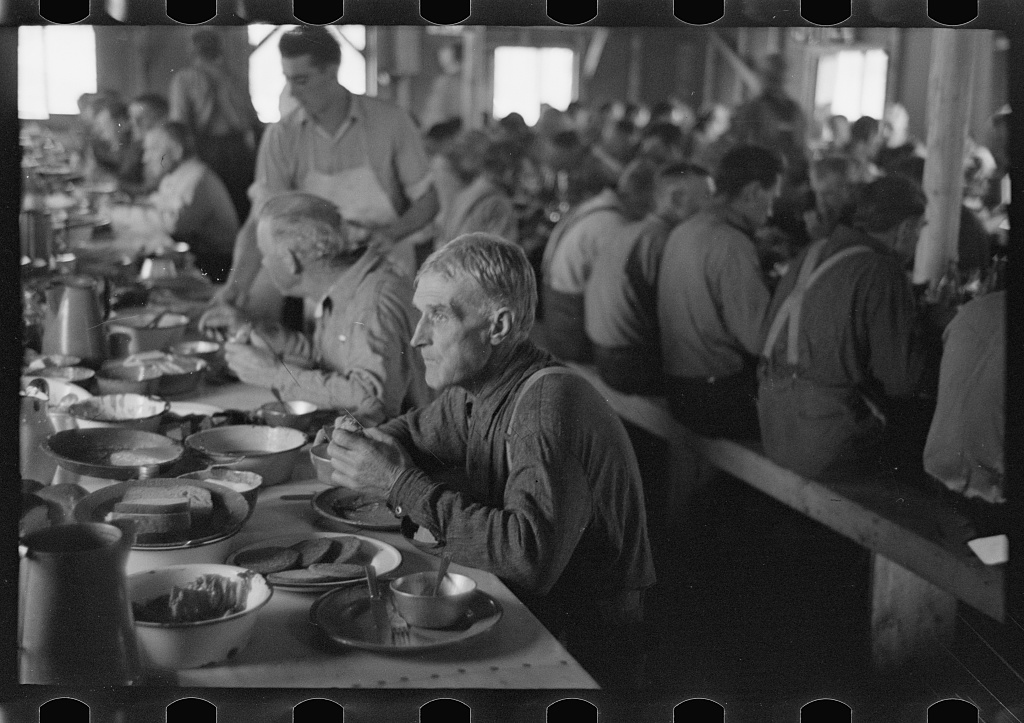
“After dinner coffee, restaurant, Lufkin, Texas.” (1939)
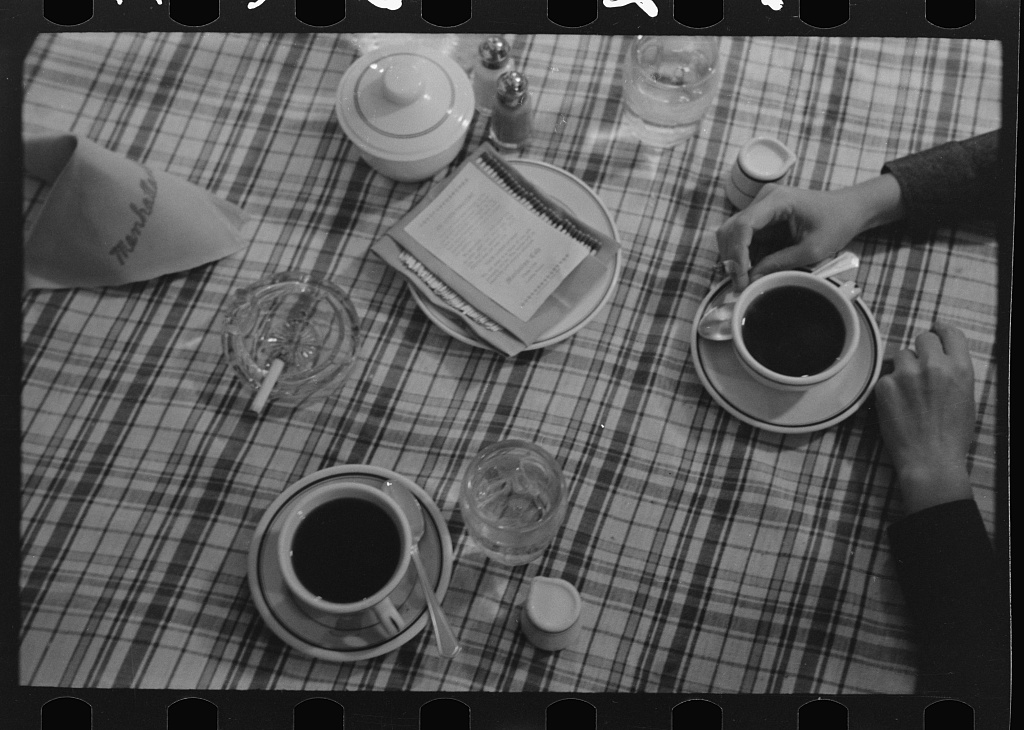
Photogrammar / Russell Lee
These photos certainly put things in perspective. They definitely give us a lot to be thankful for, and a greater appreciation for our parents, grandparents, and great-grandparents who may have lived through the Depression.
